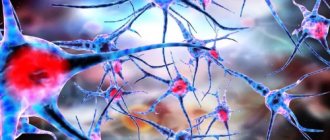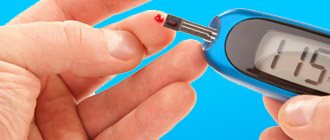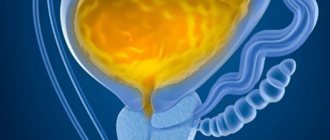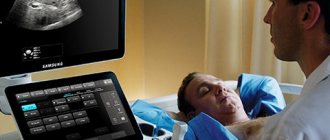In the problem of impaired blood supply to the brain, more attention is given to the arteries. They are the ones who bring oxygen and plastic materials to create energy and allow neurons to perform their functions. But venous circulation is no less important.
The veins carry out the removal of waste substances (waste) from the blood. Thanks to these vessels, the necessary cranial pressure is maintained by discharging cerebrospinal fluid into the cerebral venous sinuses.
Disruption of the venous outflow of the brain provokes chronic insufficiency and stagnation, contributes to the occurrence of phlebitis and thrombophlebitis, and causes hydrocephalus with compression of the brain centers.
Anatomy and structural features of the cerebral venous vessels
To understand the pathology of obstructed outflow from the brain, it is necessary to take into account the characteristics of the cerebral venous vessels and their adaptation to overload.
- The venous wall in the brain does not contain the valve apparatus, which is designed for the load in the limbs. Therefore, blood flows freely in both directions, depending on the pressure created. This creates the preconditions and danger of rapid spread of infection from the sinuses, from the face, and eye sockets. Clinically, symptoms of, for example, sinusitis are associated with signs of cerebrovascular accident, when the disease begins with a severe runny nose.
- Almost all vessels have their own location and do not accompany the arteries.
- Intermediate collectors for venous blood and cerebrospinal fluid from the ventricles are the venous sinuses, which are connected by separate branches.
There are superficial and deep veins:
- superficial - located in the pia mater and lie in the interlobar grooves, collecting blood from different parts of the cerebral cortex and cerebellum;
- deep - formed from the nuclei of white matter and subcortical ganglia.
The bones of the skull contain diploic and emissary veins that carry blood into the sinus system and provide connections between the superficial and deep vessels.
At the exit from the brain, the veins form 3 plexuses in the area:
- foramen ovale;
- carotid artery canal;
- canal of the hypoglossal nerve.
The seven superficial veins are interconnected by anastomoses. Internal veins are represented by trunks:
- from the cerebrum - they carry outflow from the thalamus opticus, ventricles, and the substance of the hemispheres;
- from the choroid plexus and septum of the lateral ventricle.
All branches merge into one short large vein (up to 10 mm long). It is called the vein of Galen or cistern. Through it, blood from the brain enters the straight sinus, leaves the head into the internal jugular vein, and through the subclavian vein and brachiocephalic trunk into the superior vena cava.
By location, the jugular vein lies directly under the lower edge of the sternomastoid muscle (longus colli muscle, visible when turning the head to the side). This localization impedes venous outflow and causes symptoms of cerebral congestion with any external pressure on the neck area.
Causes of outflow disturbance
After a brief excursion into anatomy, it becomes clear that the reasons for the deterioration of the outflow from the brain can be hidden both in diseases of the brain and outside it. This is important to consider in order to prescribe the correct treatment.
Violation of the venous outflow of the brain can occur due to the “fault” of intravenous formations:
- phlebitis and thrombophlebitis;
- when the thrombus is located in large sinuses;
- against the background of congenital anomalies in the location and size of the efferent veins (most often found in the vein of Galen).
The pathology accompanies, as complications, inflammatory diseases of the nasopharynx, sinusitis, meningitis, a tendency to increased thrombosis and slow blood flow (heart failure).
Compression of brain tissue by a traumatic hematoma is possible when the skull bones are intact, but the membranes are ruptured
A purely mechanical compression factor occurs when:
- brain and neck tumors;
- skull injury with bone displacement or severe swelling;
- compression and thrombosis at the level of the superior vena cava and jugular vein;
- traumatic injury to the cervical vertebrae;
- during an attack of bronchial asthma;
- strangulation.
The connection between venous outflow and arterial circulation should be emphasized:
- Increased blood pressure leads to an increase in the intracranial outflow of cerebrospinal fluid into the sinuses. Antihypertensive treatment can improve the tense state of the venous system.
- Strokes cause swelling of the brain and, consequently, poor drainage at the site of hemorrhage or ischemia. A hematoma is an additional mechanical formation that compresses the venous vessels. Therefore, to improve blood flow, surgical removal of the hematoma is used.
Exercises should be chosen taking into account the possibility of outflow, so as not to impair blood circulation in the brain
There are known factors that contribute to the obstruction of venous circulation. These include:
- strong physical stress;
- forced position of the body upside down, with the head tilted down and forward, turning to the side;
- significant breath holding by divers, singers, and brass players;
- wearing tight collars;
- in a child against the background of screaming;
- during a paroxysmal cough.
Working out the back of the neck
As we have already found out, the problem arises due to compression of blood vessels, which is a consequence of the incorrect position of the vertebrae. Gymnastics will help solve and even more so prevent such a situation. For urgent help, you can gently influence the vessels. Let's take a closer look at how to do all this.
Gymnastics for the neck
Gymnastics should be performed regularly. Spend just 3-5 minutes a day and you will almost 100% protect yourself from headaches. A bonus is the prevention of high blood pressure – both intracranial and arterial.
There are many sets of exercises for the neck; you can see in detail, with step-by-step instructions and explanations, in Dr. Shishonin’s publications on cervical osteochondrosis. You've probably already read these articles and watched the videos, so let's briefly remind you. Tilts and rotations of the head, movements of the neck should not be performed abruptly, but carefully, so that there are pleasant sensations similar to those you experience when stretching after sleep.
Triggering a reflex response
The back of the neck can be treated with a piece of ice. The temperature effect causes a reflex reaction of the vessels: they react by restoring their shape. Dr. Shishonin spoke in detail about these techniques in specialized articles on cervical osteochondrosis.
Here we just remind you that you need to work with ice carefully. Don’t be afraid, you physically won’t be able to harm yourself, but don’t overdo it, otherwise the effect will be worse than from a delicate influence.
Stages and forms of the disease
Violation of venous outflow goes through three stages of clinical manifestations:
- I - no symptoms (latent stage);
- II - there are symptoms of a violation of the venous outflow of the brain, but the patient tolerates them, mistakes them for another disease, and does not change his life routine;
- III - venous encephalopathy develops with persistent organic disorders; a person cannot do without treatment.
In addition, neurologists and neurosurgeons distinguish 2 forms of pathology:
- primary - associated with changes in the tone of the brain veins, observed with injuries, intoxication with alcohol and nicotine, increased or decreased blood pressure, prolonged exposure to the sun;
- congestive - is provided by factors of mechanical compression of the veins.
Improving blood circulation in the brain - vitamins
Among the vitamins for improving blood circulation in the brain, one can highlight Vitamin B5 (pantothenic acid), which is necessary for the functioning of nerve fibers, the division of epithelial cells and the formation of the inner wall of blood vessels. Vitamin B6 (pyridoxine) is involved in the functioning of the nervous system, is necessary for the formation of a number of neurotransmitters, and reduces the level of lipids in the blood. Vitamin B8 (inositol) is part of the protective membrane of brain cells, stabilizes lipid metabolism, and normalizes mood.
Vitamin C (ascorbic acid) normalizes blood clotting, stabilizing blood flow, stabilizes capillary permeability, and is an antioxidant. Also, complexes with minerals - phosphorus, magnesium, selenium and zinc - are useful to improve blood circulation in the brain. All these minerals are necessary to maintain the functioning of brain cells. Examples of such complexes are Magnesium + Vitamin B6, Zinc + Vitamin B6, Multivitamin complex 360.
Symptoms
The development of a venous outflow disorder is judged by the symptoms of cerebral circulatory insufficiency that are repeated with consistency for at least three months:
- the patient complains of dull headaches in the morning (after a long stay in a lying position), if necessary, turn the head to the side;
- increasing headaches appear after stress, hard work, or drinking alcohol;
- darkening of the eyes, dizziness, fainting;
- poor health when the weather changes, changes in atmospheric pressure;
- tinnitus is detected;
- insomnia is accompanied by depression;
- general muscle weakness;
- swelling of the face in the morning;
- hemorrhages in the sclera that appear after night;
- numbness of hands and feet;
- decreased memory;
- persistent cyanosis of the face, lips, ears.
Dizziness often accompanies head movements
Relatives notice a change in the patient’s character and behavior, the following appear:
- unbalanced reaction to events, crying and tearfulness;
- possible development of delusions of self-superiority;
- psychosis occurs less frequently.
At the same time, focal symptoms develop, indicating a compressed area of the brain:
- tremor of hands and head;
- unsteady gait;
- slow movements;
- increased tone in some muscle groups;
- rarely - epileptic seizures;
- asymmetry of the nasolabial folds of the face.
Exercises for the heart
The heart is an organ that works constantly. His condition may worsen with age, as well as with increased workload. Weakness of the heart muscle is often observed in overweight patients with concomitant pathologies. The only way to keep it in good shape even in old age is to train regularly.
Exercises can be started as morning exercises, immediately after waking up. The simplest of them, which is suitable as a warm-up, is rotation of the hands and feet. Such movements accelerate blood flow in the distal parts of the extremities, dilate blood vessels and stimulate the heart. Next, you can proceed to the main set of exercises for blood vessels and the heart.
- To begin with, you can rise high on your toes and walk with your knees high. This exercise activates blood circulation in the lower extremities.
- Starting position: standing, feet wider than shoulder width. The hands are on the belt, and the body must perform smooth deep bends.
- In a standing position, spread your arms as wide as possible to the sides. Next, the palm of the right hand touches the left shoulder and, conversely, gradually increasing the speed. You can do up to 50 repetitions in one approach.
- Another useful exercise is circular rotation of the arms in the shoulder joints. With both hands, make a full circle at the same time, first in the forward direction, then backward.
- While lying on your back (especially before going to bed), do the “bicycle” and “scissors” exercises.
IMPORTANT! Heart exercises don't have to be fast and intense. In the absence of pathologies, you can gradually increase the load by adding running and other cardio exercises.
Diagnostic methods
Diagnostics should reveal the form of the disease and detect the main factor preventing venous outflow. It is recommended to:
- X-ray examination of the skull - especially indicated after skull injuries;
- CTG (computed tomography) is better performed simultaneously with vascular angiography - it reveals the consequences of a stroke, hematoma;
- magnetic resonance imaging - allows you to detect tumors, brain cysts, aneurysmal dilatations and vascular anomalies, changes in the structure and size of the ventricular cavities;
- examination of the fundus by an ophthalmologist shows a sharp expansion of the venous bed;
- Ultrasound examination of neck vessels to determine possible stenosis and reduced blood flow speed.
An X-ray with contrast of the venous system revealed an aneurysm of the vein of Galen - a serious pathology of an abnormal nature that occurs in children
How to treat outflow disorder?
Seeing a doctor at the stage of moderate manifestations allows you to prescribe timely therapy and adapt the patient’s life to the altered blood flow in the brain.
In general, the following should be provided:
- refusal of too strenuous work, night shifts;
- limiting physical activity;
- stopping smoking and drinking alcohol;
- inclusion of vegetables and fruits in the daily diet, limitation of heavy and spicy foods, salt, seasonings;
- normalization of sleep with evening walks, tea with mint, herbal sedatives such as valerian, motherwort, lemon balm (ready-made drug Novo-Passit).
Among the choice of drugs, the doctor prescribes a course of use:
- venotonics (Detralex, Venoruton, Aescusan drops, Phlebodia 600);
- diuretics, which are indicated for severe symptoms (Lasix with Eufillin intravenously), for continuous use - Diacarb according to the scheme;
- to prevent thrombosis, anticoagulants and antiplatelet agents are recommended (Warfarin, Thrombo Ass, Cardiomagnyl);
- Prodectin, Piracetam, Stugeron, Cortexin, Cerebrolysin help improve the functioning of brain cells.
The effect of self-massage
Massage of the collar area helps relieve tension in the muscular corset of the neck. Relaxation improves venous blood flow. A massage course can be carried out with the participation of a specialist 2 times a year. But it is much more useful to learn self-massage and do it several times a day. Several rules must be followed:
- massage each side with the opposite hand;
- maintain a calm breathing rhythm;
- start with light circular movements, gradually pressing harder on the muscles in the suprascapular region;
- lightly clasp your neck with your hand and use your fingers to perform spiral movements from bottom to top along the paravertebral zone to the base of the skull.
Physiotherapeutic techniques in the form of electrophoresis with Eufillin and laser exposure are also prescribed in the “collar” area.
Who needs prevention?
The risk group with the greatest likelihood of developing impaired outflow through the veins of the brain includes:
- smokers and alcohol abusers;
- professions associated with constant lifting and carrying loads;
- office workers who sit for a long time at a table with their heads bowed, needing an awkward turn of the head;
- architects and draftsmen;
- people of underwater professions;
- operating surgeons;
- athletes involved in swimming, diving, weight lifting;
- opera singers and wind musicians.
If the doctor has discovered venous congestion in the brain, then treatment must be carried out with the utmost seriousness and advice must be heeded even if the symptoms are not too severe. Traditional methods should be used only after consultation with a doctor. The ability to think rationally and not be a burden to others depends on the outcome of behavior and therapy.
Always remember about kidney failure!
Without a significant reduction in the excretion of solids in the urine, there is no polyarthritis, no polyneuritis, no osteomalacia.
Solid substances retained in the body (urea, uric acid, sodium chloride, phosphates, ammonia) are deposited:
- in joint cavities (arthritis, periarthritis, bursitis),
- in the endoneurium (neurites),
- in the skin (dermatitis, eczema, pemphigus - retention of sodium chloride in the skin),
- in the gallbladder (cholelithiasis),
- in the kidneys (nephrolithiasis, sand, stones),
- in arterioles (hypertension),
- in the capillaries (endoarteritis).
They are the culprits of glaucoma and cataracts.








